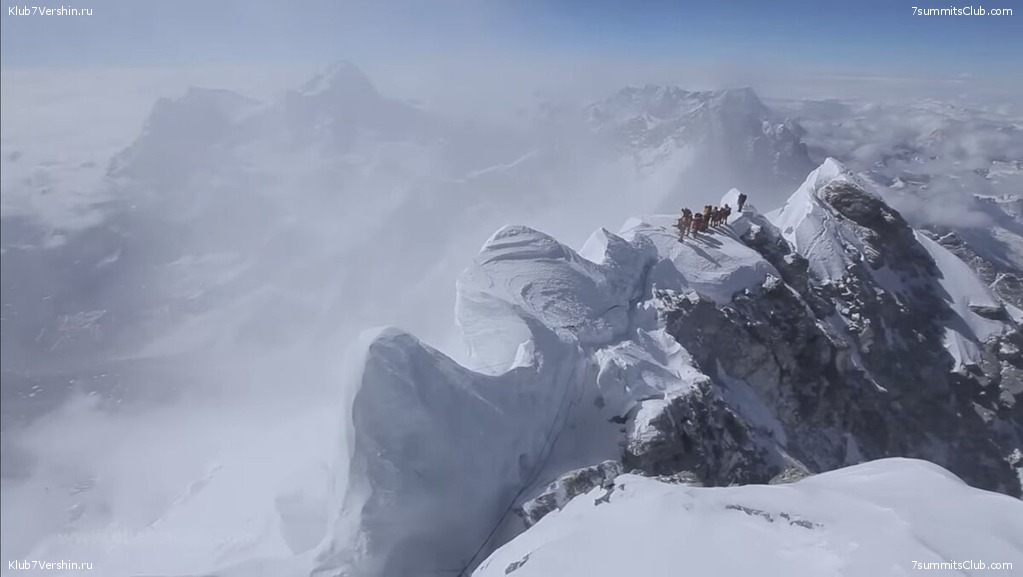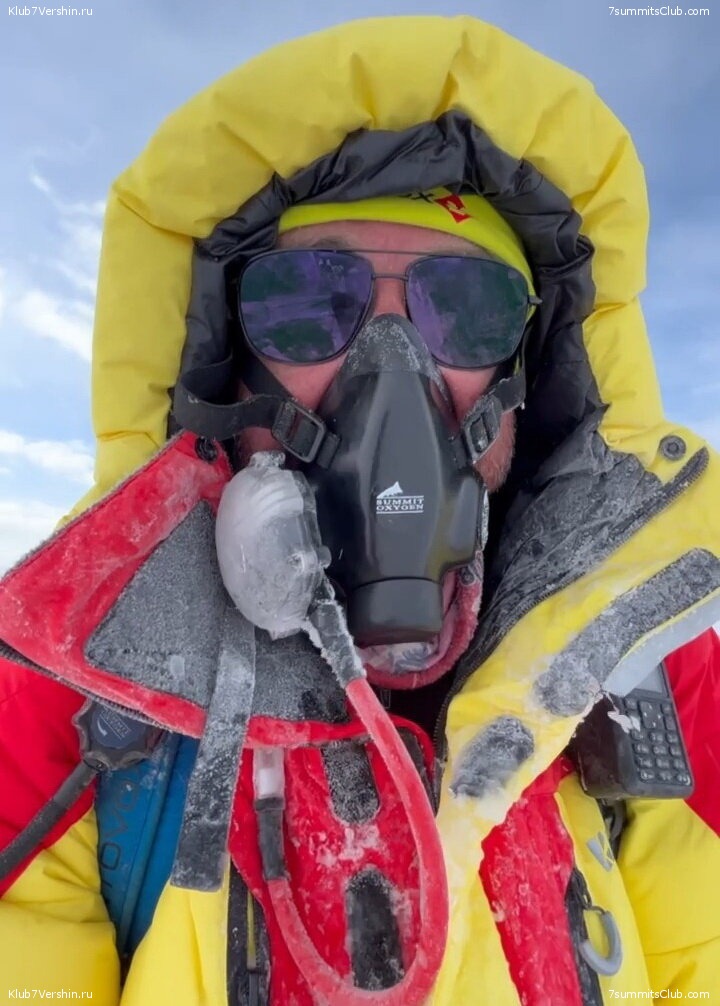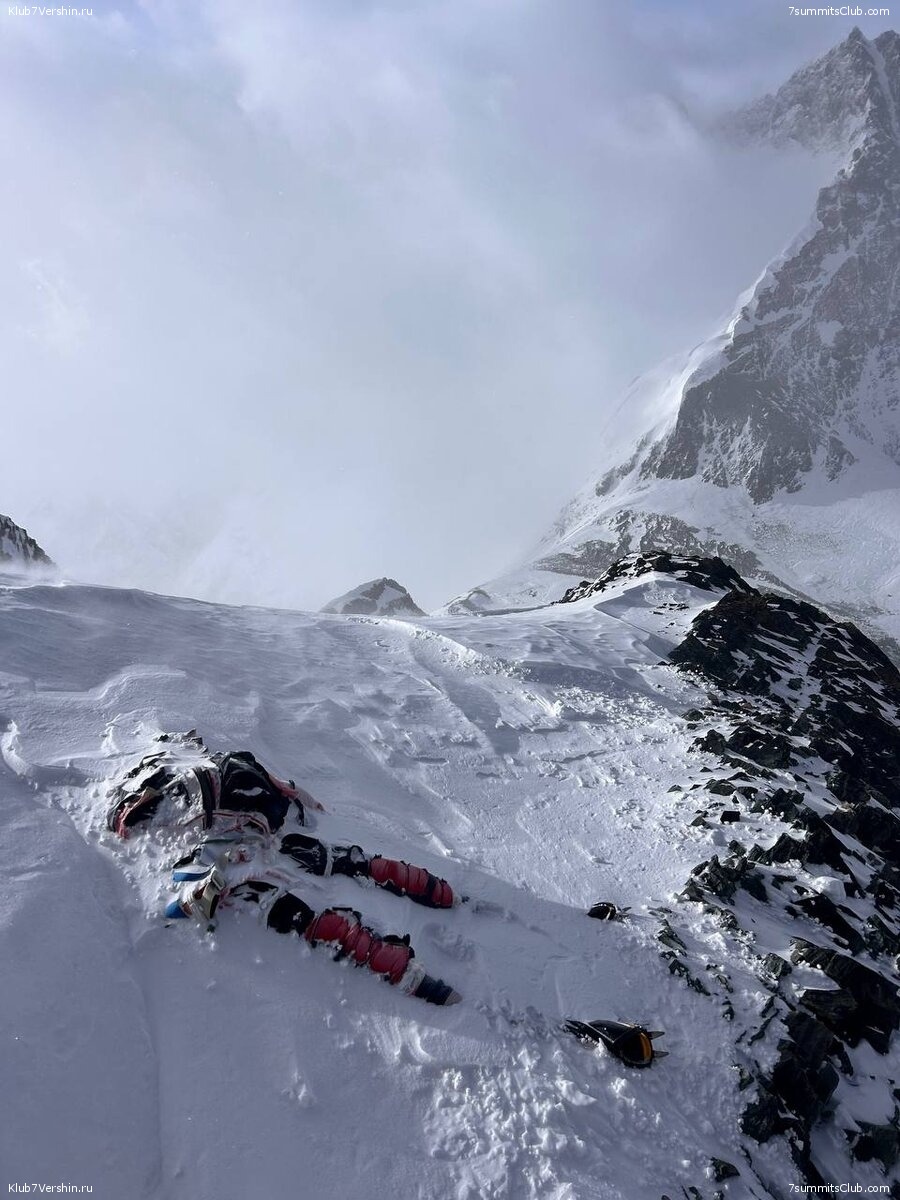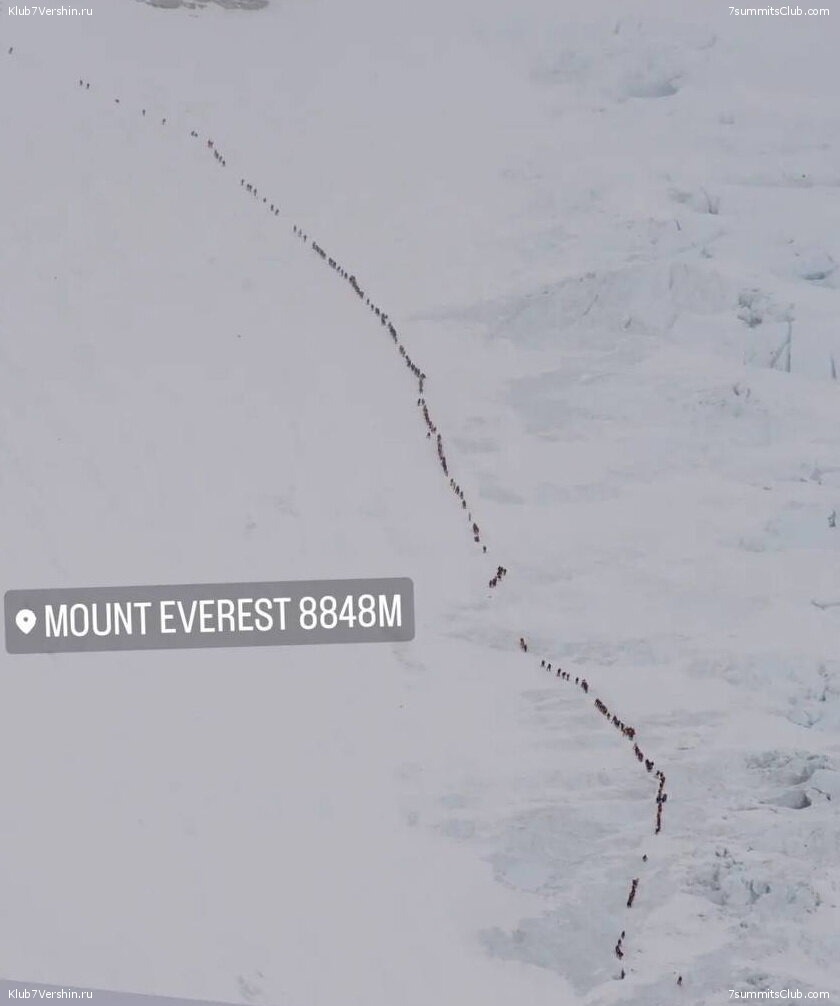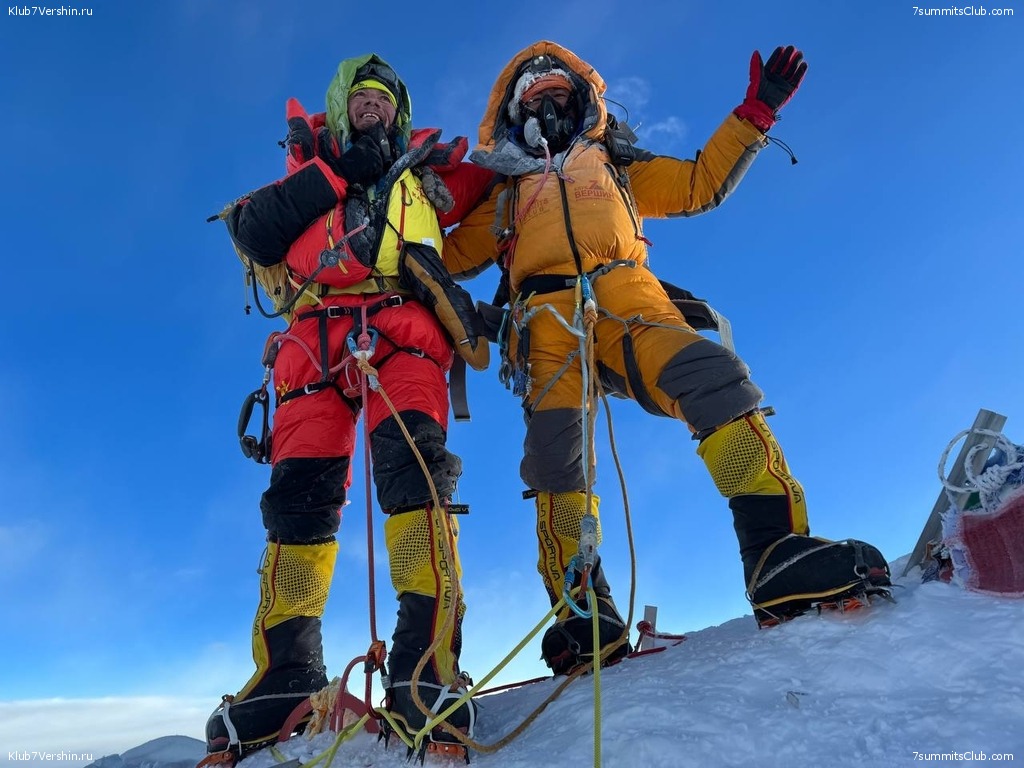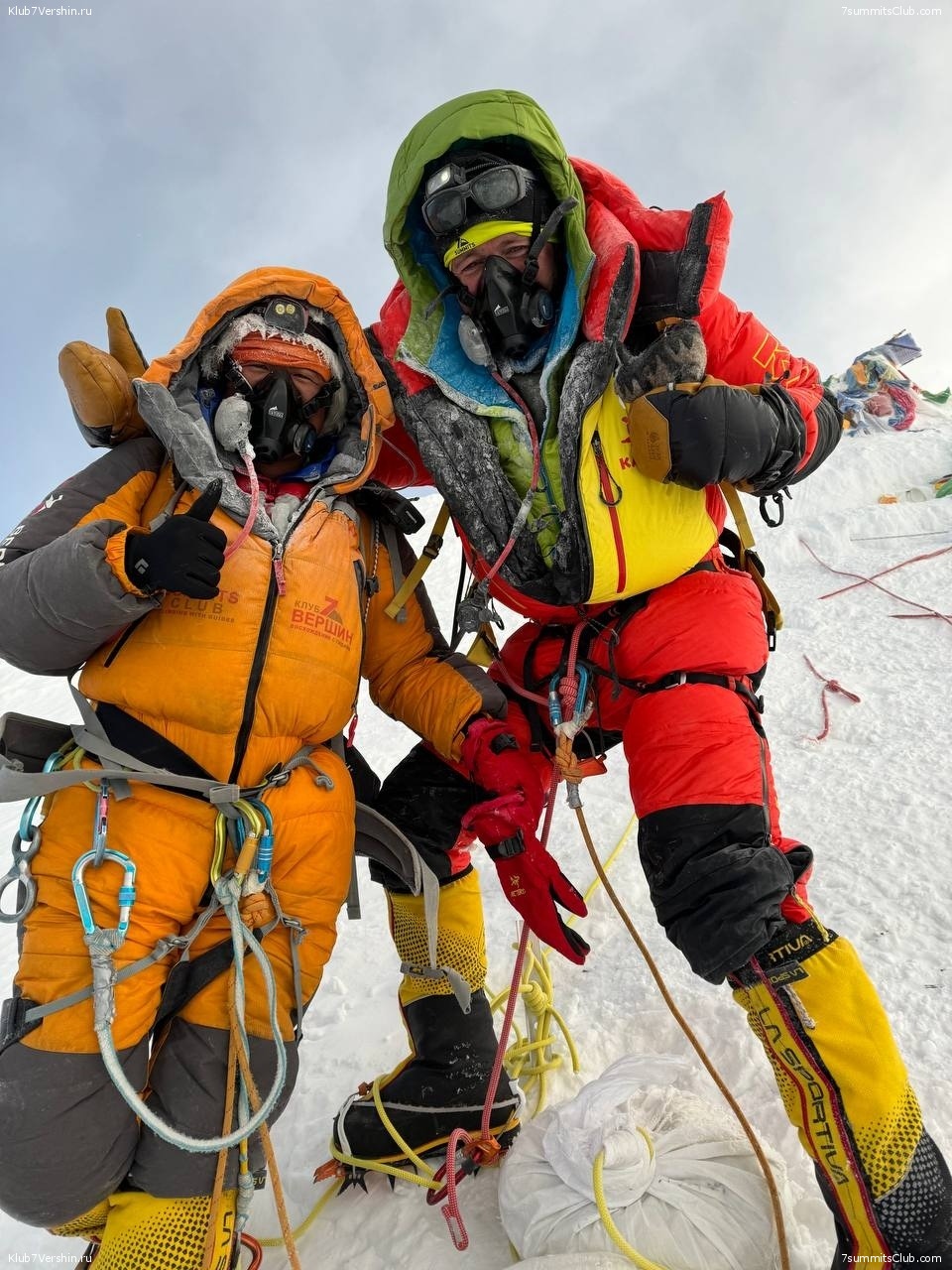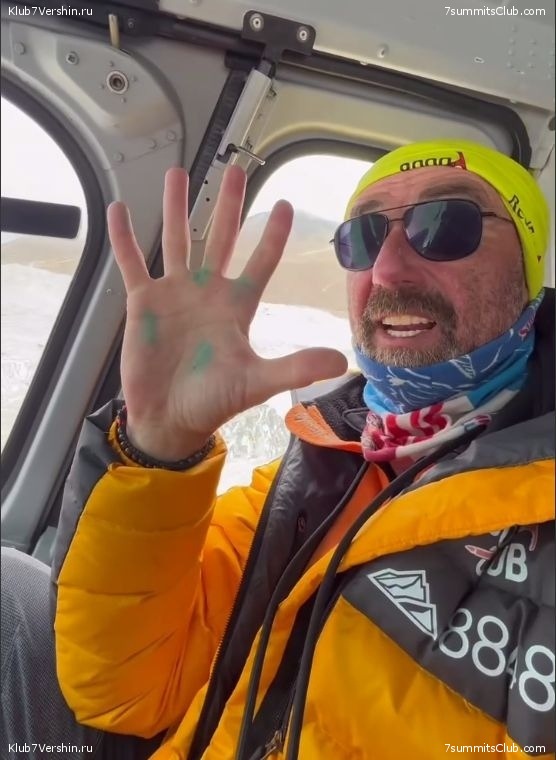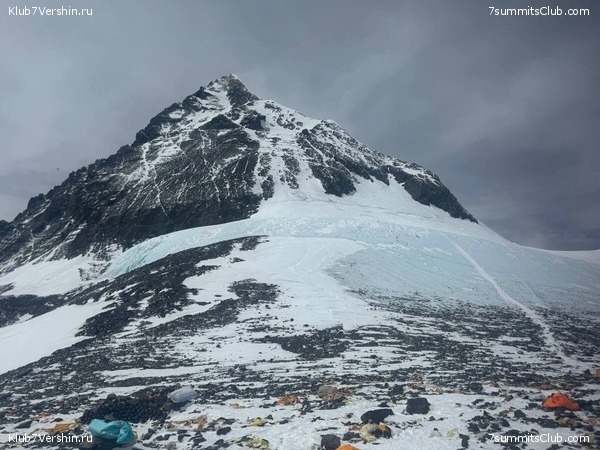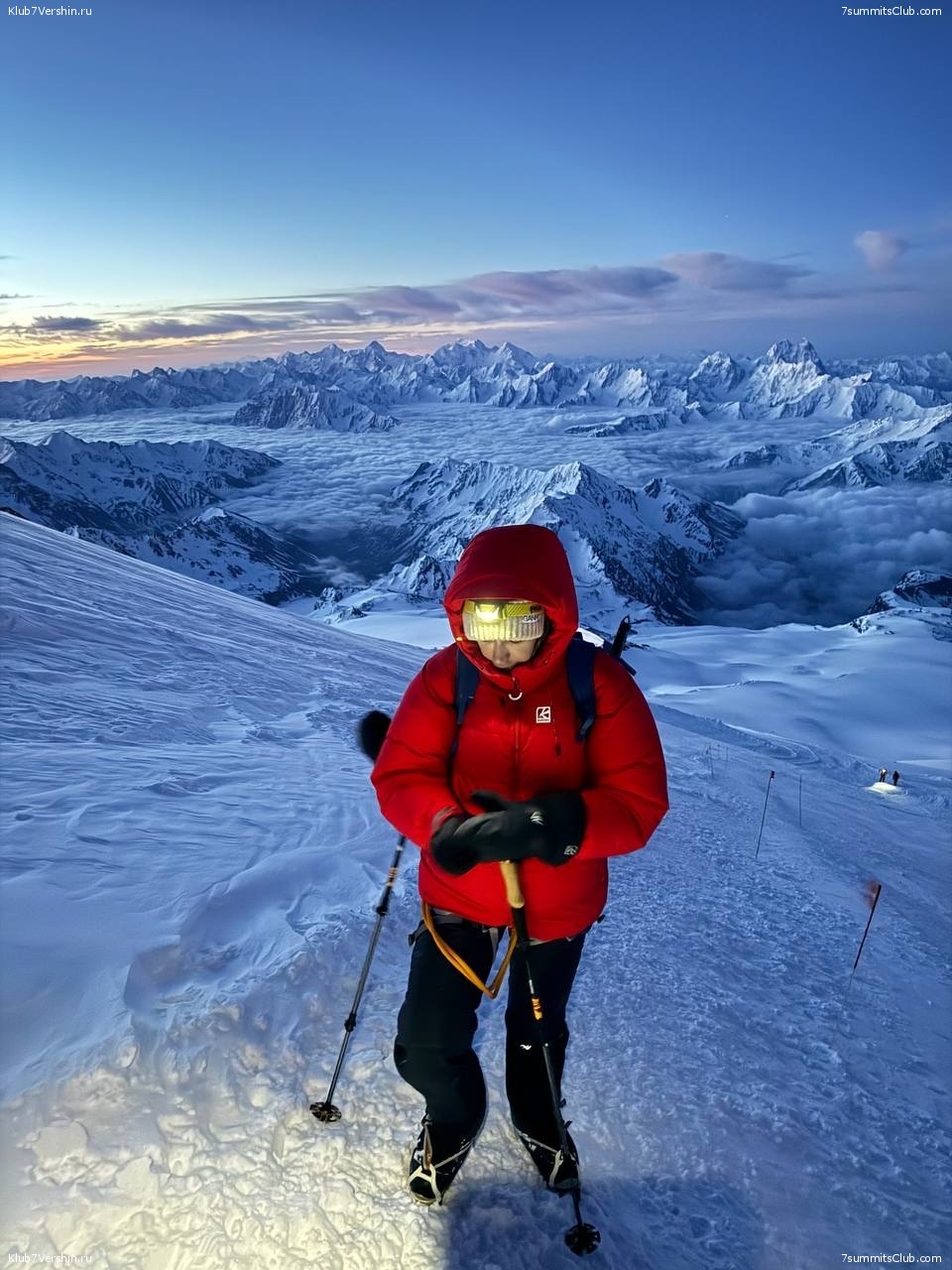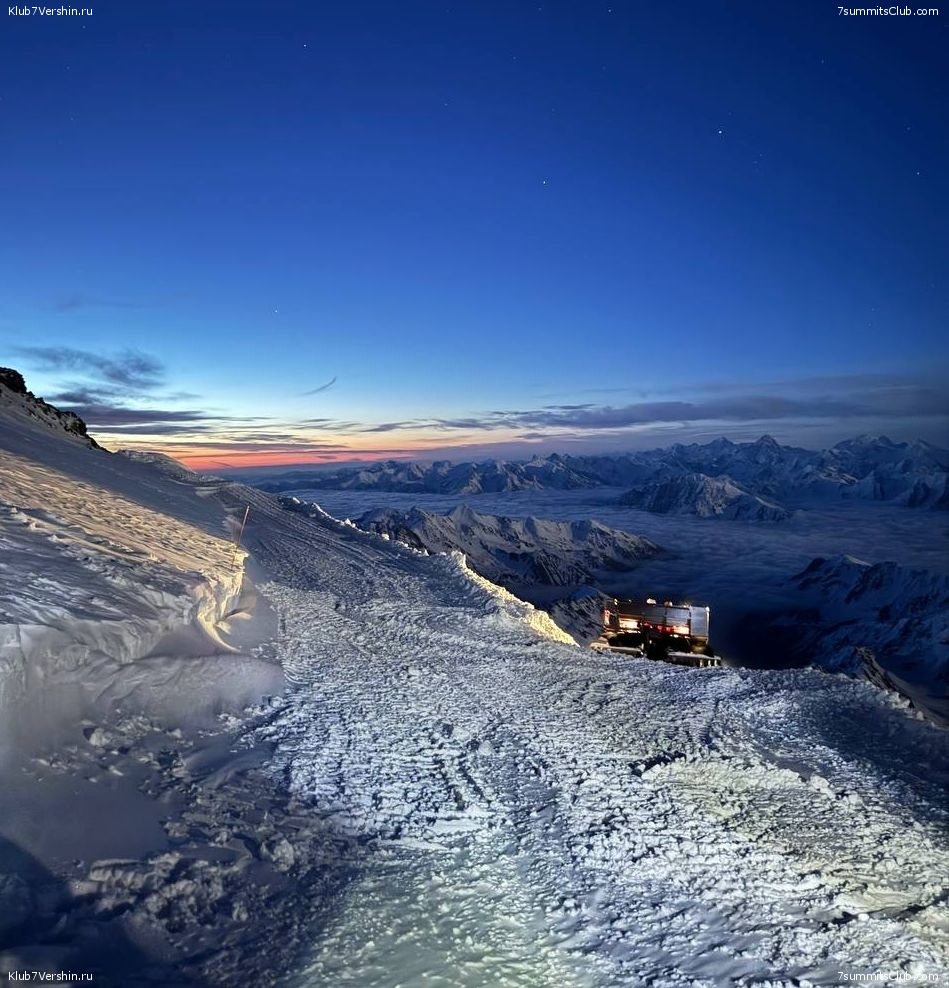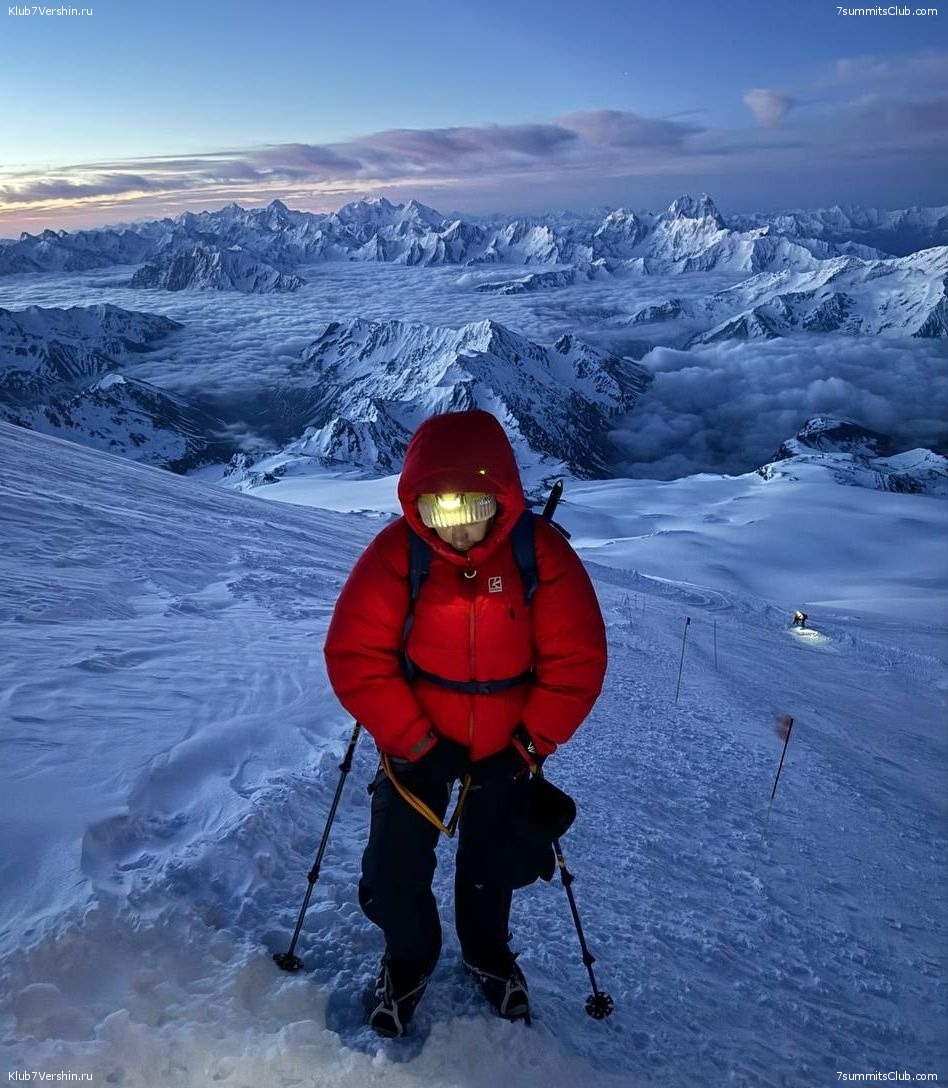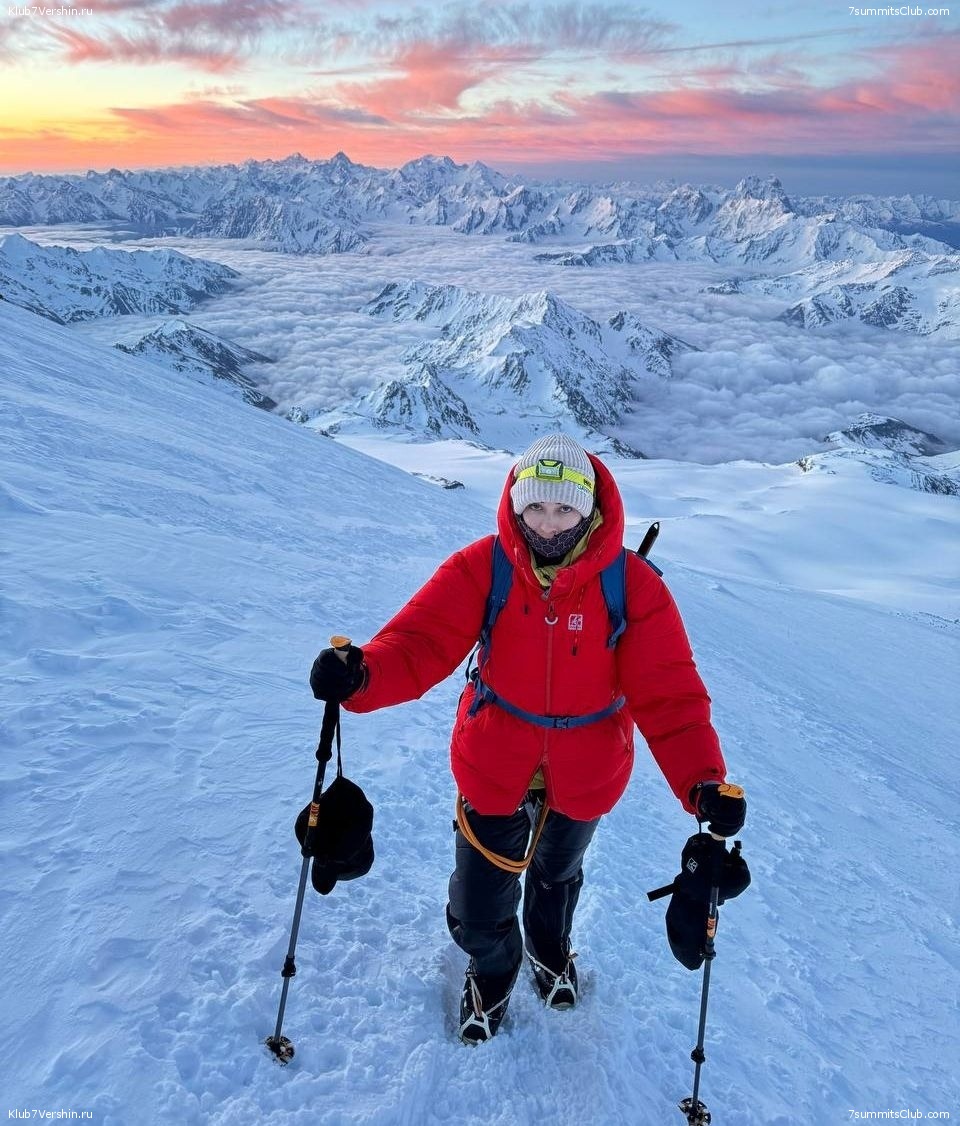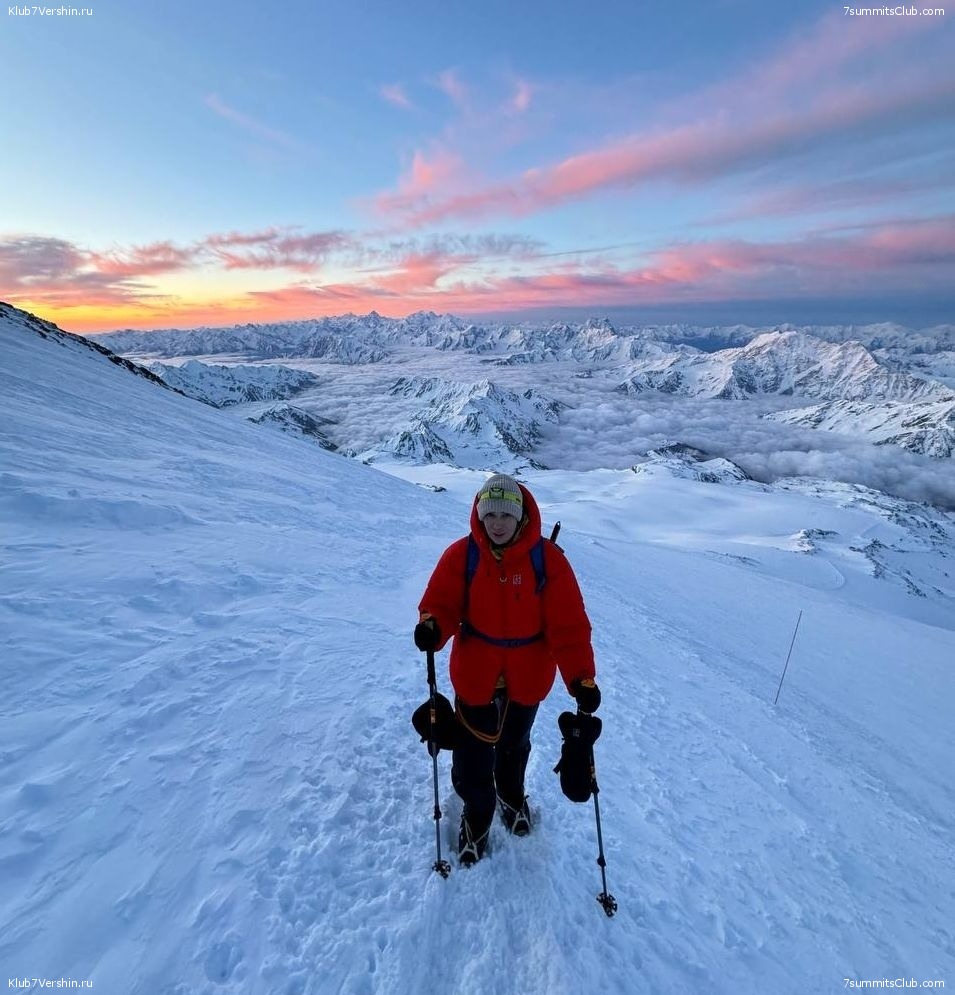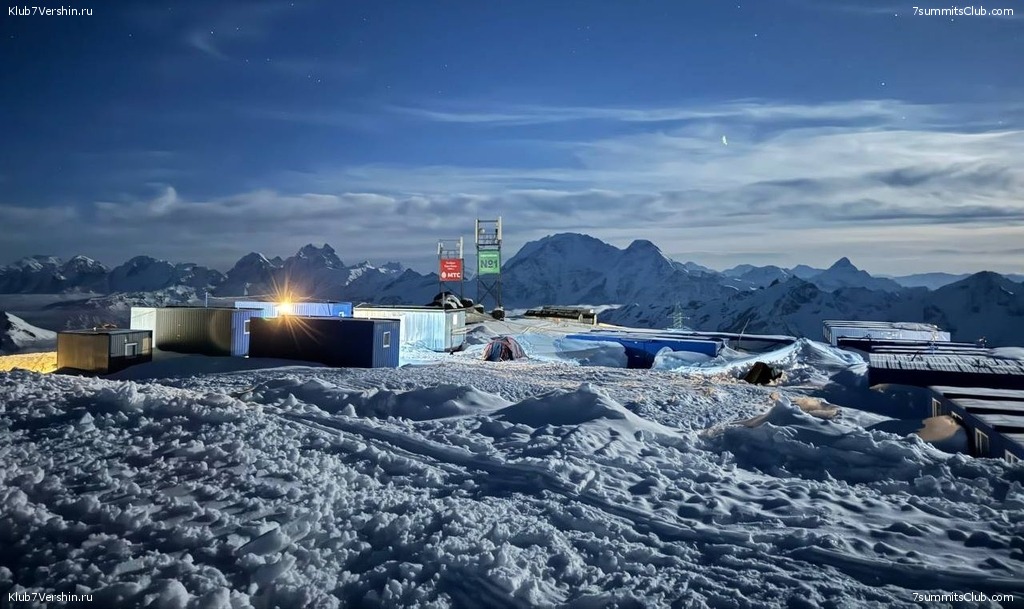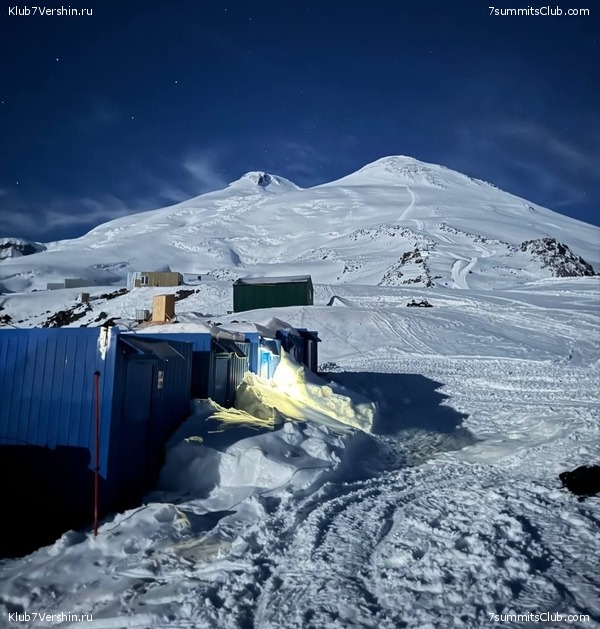All news: 24 May 2024
I decided to walk to the first corpse and turn back, still it is the 13th time to Mount Everest...
Everest.
Alex Abramov: On May 19 of this year, the team of my "Seven Summits Club" descended from the slopes of Everest in full force with the summit…
And me? It is on the height of 8000, a couple of hours before the exit. Well, why should I ...
Alla Mishina: Interview with Alex Abramov on May 20, 2024. The original is here…
Alex Abramov: On May 19 of this year, the team of my "Seven Summits Club" descended from the slopes of Everest in full force with the summit…
And me? It is on the height of 8000, a couple of hours before the exit. Well, why should I climb to the top for the 13th time? Everything is going according to plan, but in places with a creak. God grant memory... This is my twenty-first Everest expedition and I have been on the summit 12 times. And in January of this year I celebrated my 60th birthday. And it would be nice to celebrate the following years as well. And this is the thirteenth time... Well, at least there are no black cats at an altitude of 8000, otherwise there's something going on with this mountain illness.
View of Mount 8848 from the South Col 8000
Well, what should I create? Not a damn thing, but the facts: between the 3rd and 4th camps at an altitude of 7800, I was covered specifically despite the fact that I had been training all year. But then it's worth a little snot to break through, and the writing is gone... Or maybe you should quit smoking after all? Well, wait, I quit smoking for another 7,200, so why did it get covered?
Covered and dispersed, let's forget it. It's time to think not about yourself, but about the group. What do people pay me for? For my experience, which will keep them alive, for the fact that I control every little thing on the ascent, keep the best guides and Sherpas as part of the expedition. We have everything from a doctor to a cook, everyone is focused on the result of a small, variously prepared group. My task was to prepare the group for the ascent as much as possible, both mentally and technically. But I can't walk in their place and I can't breathe in their place. Therefore, now it is "H time" for them - they must walk the distance from 8000 to 8848 themselves. And the main thing is to return as stalkers.
In order for them to return intact, and not be left without fingers or eyesight, each participant needs to have an experienced partner. Everything is clear here, there are 7 proven Sherpa guides for 7 of my members. But what if something goes wrong? If we get stuck in traffic and into oncoming traffic, as it was last year, when due to the many delays of weak climbers in narrow places, instead of 8 hours we went up for as much as 12 hours, wasting oxygen? And if the weather covers us like it did here three days ago? There's Kotlyar and his group barely got out of the storm, people froze.
And two independent climbers from Mongolia, who got lost on the descent, still cannot be found. What's there to guess - they're corpses. And to prevent all this from happening to mine, we need our small private rescue team, which will drag up and spread emergency oxygen in critical places, and which will instantly participate in rescue operations if someone is covered in the death zone. This is a classic of Soviet mountaineering - we always went to serious mountains only when we were released by the head of the rescue, and he released us if there were rapid response and support groups in the climbing area.
The group is in the area of the Southern Peak at 8750
It's now climbing who wants where he wants and with whom he wants — that's the result. But the Soviet classics are ironclad, it's been tested. And my clients in the group — they are not athletes, so they walk at different speeds, which means they will stretch over the mountain. There was a "steam locomotive" for 3 or even 4 hours of difference: who will get into which traffic jam is not to guess. This means that seven reserve Sherpas with emergency oxygen need to be stretched along the mountain at a reasonable distance between the pairs. I can't help them there anymore, there's a real death zone there. Now we need to discuss all the little things with everyone and concentrate their forces, systematize every detail so that they do not deviate from the plan and do not come to the top at the utmost possibilities: the road down is longer. The statistics of Everest are known: more died on the descent than on the ascent. Climbing up at full strength and with euphoria, with a warm heart. What's wrong — turned around and went down. But after the summit, they go down exhausted, often in bad weather and on the last liters of oxygen, with imperceptibly creeping frostbite of the face and hands and feet.
Well, that means 14 Sherpas, of which 7 go up the mountain and 7 stretch out on the mountain in a support group. They all have walkie-talkies. But I have only 14 Sherpas, and we are in group 7 + 1, so I am left without a partner.
And you need to carry a lot of oxygen — 5 bottles for each pair at least: two for a sherpa, three for a tourist. And this is 22 kg of weight for two. And he gets 5 more kilos of his personal belongings for small things — the backpack itself also has weight, thermos flasks, food, battery flashlights, first-aid kit, spare glasses, spare mittens... In short, either bring in additional oxygen and arrange the emergency support group correctly, or someone from the reserve team will go with me. Either cargo and belay for the participants, or for my 13th summit. But it hit me specifically yesterday. And now the tourists will count their partners, and someone will be in the red. And then this "minus" does not go away and all his life he will think that this is because he did not receive "his" paid sherpa from me, but I went. What's more important here? Should I go and be relatively close to them, or should I give them 200% success rate? And how can I provide them with 200% if I'm not on the mountain with them? They feel better mentally when I'm around. Nevertheless, my people know and see that those Sherpas — they are getting stupid sometimes and if something is wrong, they run away under various pretexts.
9 p.m. We have a start at 22:00. It's time to decide. Either I'm going and one of the Sherpas is with me in a rope, and we won't bring enough emergency oxygen, or I'm not going. Well, how is it — I'm not going? I'm coming, of course. But for the 13th time... And yesterday it was covered specifically. Should I throw heads/tails? What nonsense. Is it covering up again? You need to think, not throw coins.
The stratosphere. Everything is frozen
How much oxygen can I really carry on my own? I can, of course, have my 3 cylinders. A total of 20 kilos with a first aid kit. But then I'll walk slowly and I'll be of no use. That means 2 cylinders, as usual. And that means I won't have enough oxygen. Well, somewhere at the top of the support group, something is twitching. Then we return to option 1: I'm going, but I won't fully provide belay for the participants.
Stupidly. What am I playing with now? With the lives of other people who believe me. How fucked up all these corpses are here! Every year at least one of the guides or organizers will screw up, and then instead of analyzing the causes of the accident by specialists, as was customary in our time, we have an analysis on the Internet by sofa experts with hundreds of repostings by "peek-a-boo bloggers" with photos the wrong mountain, the wrong year, and the wrong corpse.... in short, some nerves are due to the many unwelcome cases of Sherpas. At least hire a triple supply...
Stop. An interesting thought flashed through my mind. I'll go with two cylinders, at the back of the group, without a partner, and I won't take anything from the emergency. On the third day, people frostbitten in a storm were running down from the middle of the mountain, they probably left half-empty cylinders on the trail. Maybe I find something, if I don't find it, I'll turn down. In any case, I'll get to the middle and be reasonably close to the group and reasonably safe to return if I'm left without oxygen.
And there is also a better idea! Either I go and find the abandoned oxygen, or I go until mine runs out at the rate of two ends, or I go to the first corpse. Well, these two Mongols have gone somewhere. And where can the corpses go? They're lying along the rope, I guess. And we are just the first group after the storm, so we will find it.
Well, here's the first one. And above, my team members climb up and the Sherpas - well, they have stretched out competently. The mountain turned out to be empty after the storm — those who got into it were dumped down from the middle, those who were going to sit it out - they are sitting in the base camp, my plan is to climb through intermediate camps in a storm so that on the first fine day to reach the summit — it worked. It doesn't blow as much on the intermediate ðàrts as on the saddle and above, where people froze. In short, the plan worked. We are alone on the mountain and the guys are walking fast, without traffic jams on the oncoming lane, I can't catch up with them.
I didn't find any abandoned oxygen, but I found a corpse — as I expected. One of the Mongols, probably. There have been no others this year yet. The height is 8700, it's time to go down, so as not to lie down next to it.
The First Mongol
The road down at a minimum of oxygen is not fast, I freeze specifically. Oxygen is the fuel for the body to create heat, without it fats do not burn. And when there is not enough of it, the brain turns off peripheral blood circulation and drives blood only to critical points, turns off the arms and legs.
Oh, suddenly there's a second one. He was not visible at night. So both Mongols have been found. We need to tell their team to take it off before the people go. The day after tomorrow there will be a crowd here - early tonight, from 5400 from base camp, a caravan of people moved out. Someone sat out the storm in the first 6200, so you need to shoot the Mongols quickly. Well, fortunately, this place is not difficult to organize the descent of bodies, four will cope.
The second Mongol
7 a.m. That's it, my friends are all on the summit and the whole support group is stretched along the route. Lord, bear with us a little longer by your side, we're leaving!
— Yes, Andrey, I'm in touch! What happened? Can't you walk? What happened? Are you blind? How much? At all? What is the height? As under the top at 8800... Right on the Hillary step drops? ...
God, I told you to put up with us a little longer...
To be continued…
The group of the 7 Summits Club "Timshel" made an attempt to climb Elbrus
Elbrus.
Alexander Dorojukov, a guide of the 7 Summits Club, reports from the Elbrus region:
Greetings from the Timshel group! Today we had an attempt to climb the summit, unfortunately, unsuccessfully. We didn't have enough strength. But in the ...
Alexander Dorojukov, a guide of the 7 Summits Club, reports from the Elbrus region:
Greetings from the Timshel group! Today we had an attempt to climb the summit, unfortunately, unsuccessfully. We didn't have enough strength. But in the morning, we admired the magnificent views. Even Kazbek was visible.

